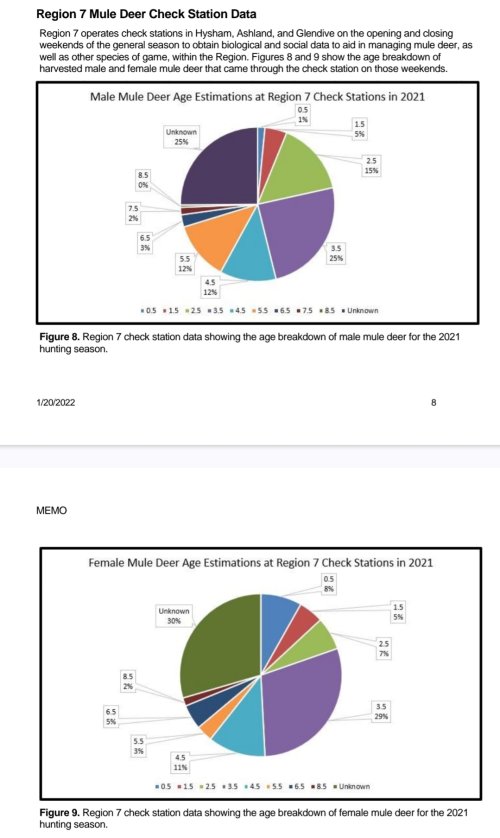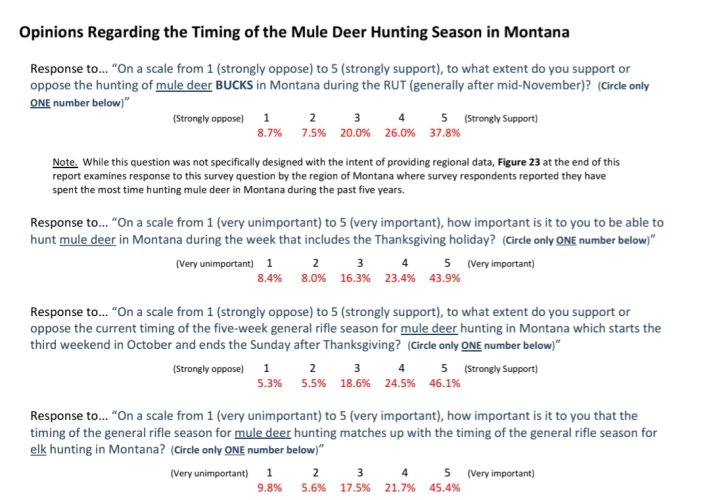Forkyfinder
Well-known member
- Joined
- Dec 13, 2023
- Messages
- 5,241

Speculating - but it could be from check stations. Which are not really voluntary - you have to stop if you have harvested game. The above is a snip from the R7 check stations in 2020.
Article below from last fall in Augusta.
"As in recent years, most of the mule deer harvest this year consisted of antlered bucks, 76 percent of the total mule deer harvest. Of the mule deer able to be aged, adult bucks greater than 2.5 years old made up 38 percent of the total mule deer harvest, with an average age of 3.9 years old, four antler points on each side, and a field dressed weight of 139 pounds."
The data doesnt look all that bad (4 or more points) based on history if you look at their harvest estimates.
Not a big sample size in relation to totals. But again, a real uphill battle will be had to convince fwp to redo the whole set of season dates for mule deer when their "data" shows a non-issue and the surveys of Montana hunters dont show a burning desire for big change. Let alone the resolution that passed. I wish you guys luck, but based on the evidence (whether or not its credible doesnt matter if thats all that exists besides anectdotes) i dont see much of a case.





